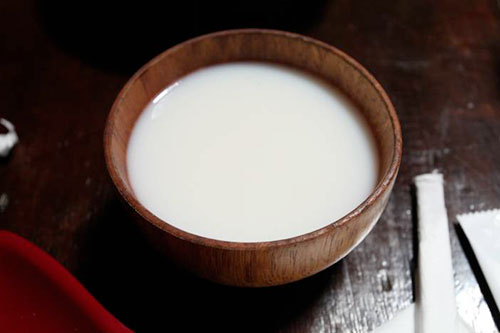Mongolian cuisine is much influenced by the continental climate that dominates the region, and also a bit by the Russian and Chinese cultures. Meat and dairy form the staple diet of this nomadic cuisine, with the use of vegetables being limited. The meat of horse, yak, beef, lamb and even camel is consumed as delicacies.
What is it: Lamb cooked inside a pot over an open fire with carrots, onions, and potatoes. The specialty of this dish is that during cooking, smooth stones are placed in the container to foster the cooking process.
What does it taste like: The smoky flavor of the meat complements the bland taste of the vegetables.
What is it: Flour dough, filled with shredded beef or lamb, cooked with onion, garlic and pepper, and then steamed.
What does it taste like: Quite similar to dumplings, however, more intense and a bit spicier.
What is it: Whole goat, with fillings of hot stones, onions, and potatoes inside it, so that it is cooked within its skin. Apart from goats, whole marmots are also used for this preparation.
What does it taste like: A very wholesome authentic Mongolian dish, having a meaty aroma and flavor.
What is it: Noodles cooked with pork, beef or mutton and a dash of cabbage, onion, and carrots.
What does it taste like: The meatiness of the stew blends in with the unhampered flavor of the vegetables to create a unique taste.
What is it: This traditional dish is basically mutton soup or stock served with noodles and veggies. The authentic recipe calls for fatty meat, though loin meat can also be used.
What does it taste like: The acidity of the soup, often prepared with curd made from yak’s milk, and the rawness of the mutton makes it a sinful appetizer!
What is it: Rice cooked with shredded lamb or beef, onions, cabbage, carrots and bell pepper.
What does it taste like: This fulfilling food that can be served both at lunch or dinner has a delightful piquancy to it.
What is it: Lower fatty back and the tail of mutton or sheep, cooked in a steam chamber for three to five hours.
What does it taste like: This popular Mongolian dish, often served for special occasions, is succulent and savory.
What is it: Chunks of mutton are boiled in salted water; commonly made for breakfast.
What does it taste like: It has a balanced sapidity, but can be made spicy by dipping in ketchup and sprinkling with pepper.

What is it: Milk of mare is fermented and served as a mild alcoholic beverage.
What does it taste like: Has a bit of a sour tang, but is an excellent source of vitamins and minerals.
What is it: Flour dough filled with butter and sugar, cooked like a pancake and served with jelly or jam.
What does it taste like: The best part of this sinful dessert is that you can control the amount of sugar or jam you want. Chocolate or fruits can also be used as a topping.
What is it: This Mongolian finger food is a version of the original butter cookies, and is served with more butter or honey.
What does it taste like: Crunchy and crusty, these are a hot favorite among both children and adults!
What is it: A traditional specialty of the Mongolian cuisine, these cakes are filled with sugar or cream, making them look like the sole of a shoe.
What does it taste like: As one bites into these, the soft texture leads to a cream-filled center! Yum!
The Mongolian cuisine offers too many delectable dishes to be showcased in a single article. These twelve are our picks and you can absolutely have differences with it.
Might want to check the validity of the pictures that you use. The picture you use to show
Boodog is not that of a goat. Boodog is more often a marmot (a type of woodchuck or groundhog) and common in the rocky area. Boodog is made with Marmot, goat or sheep. Maybe add that info to your description?
Boodog is NEVER from goat, but ALWAYS from marmot. Filled with mostly marmot & sheep meat & vegetables. Description is misleading from the boodog #3